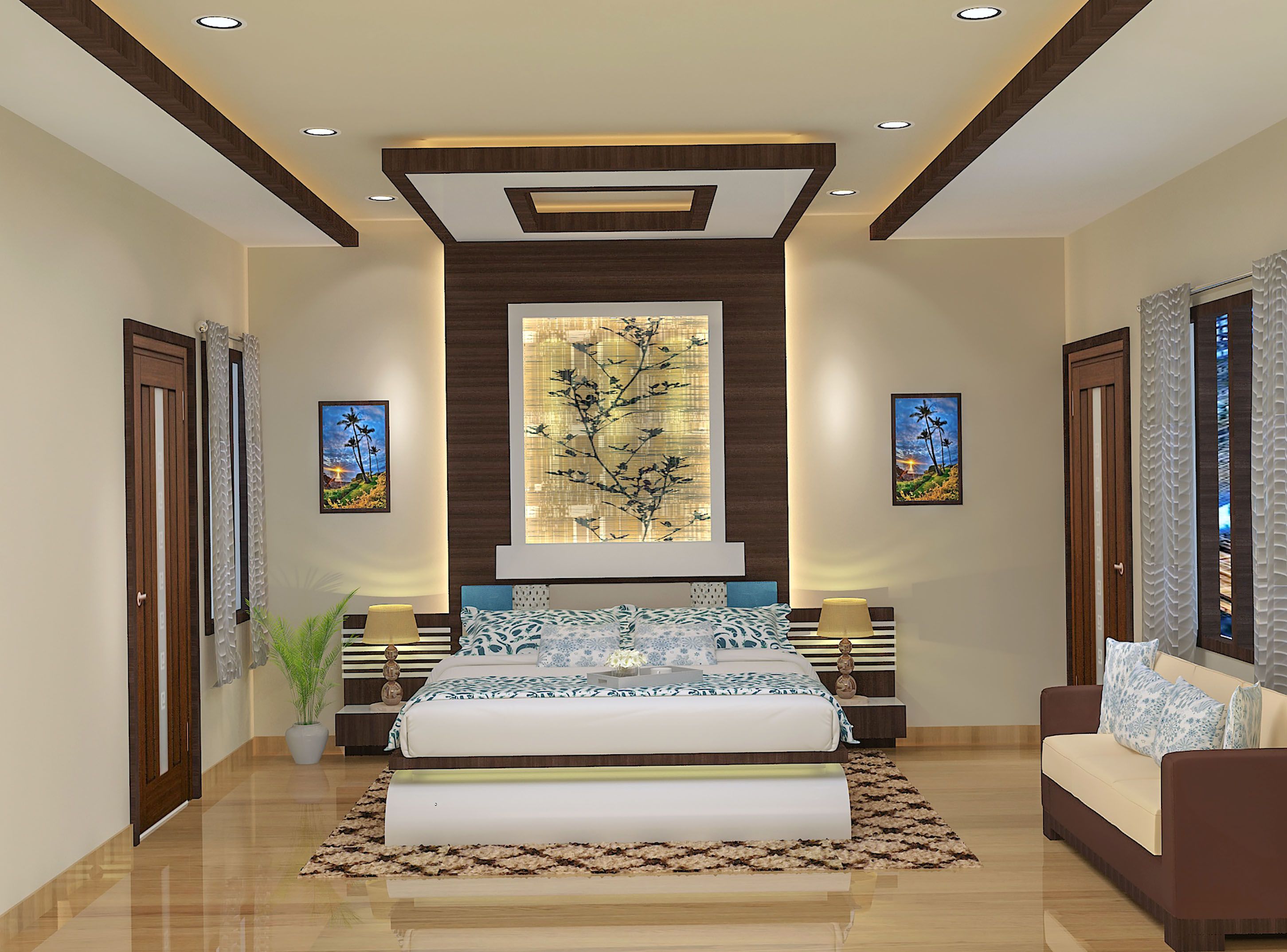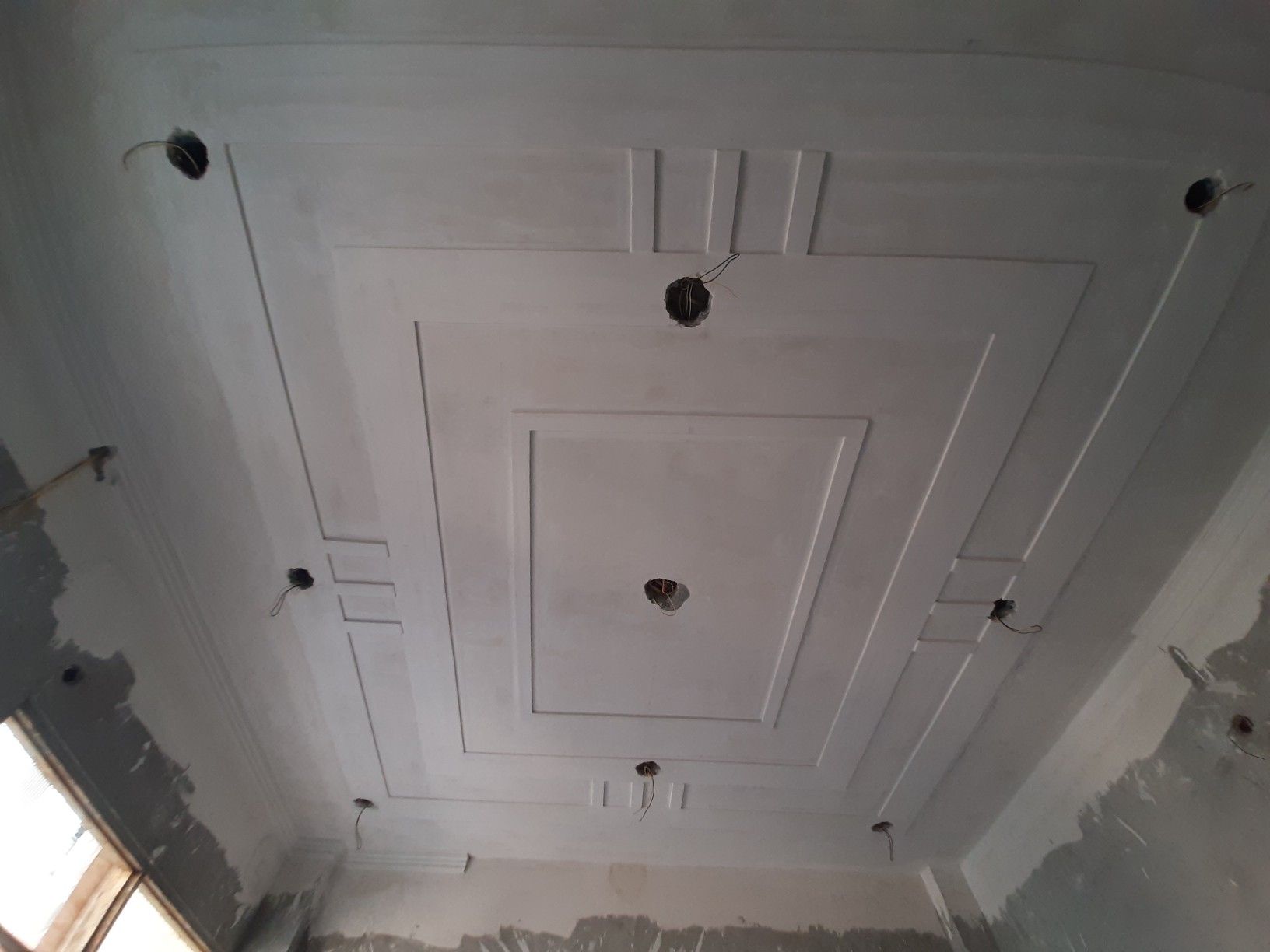Understanding Pop Ceiling Designs for Bedrooms

Pop ceilings, also known as false ceilings, are a popular architectural feature that adds a touch of elegance and functionality to bedrooms. They involve the creation of a secondary ceiling suspended below the main ceiling, offering a multitude of design possibilities.
Types of Pop Ceiling Designs for Bedrooms
Pop ceiling designs for bedrooms offer a range of aesthetic and functional benefits, catering to various preferences and requirements. Here are some of the most common types:
- Coved Ceilings: Coved ceilings feature a curved or rounded transition between the wall and the ceiling, creating a soft and elegant look. This design adds a sense of spaciousness and can visually enhance the height of the room.
- Coffered Ceilings: Coffered ceilings involve the creation of recessed panels on the ceiling, often in a grid pattern. They provide a sense of depth and dimension, adding a classic and sophisticated touch to the bedroom.
- Tray Ceilings: Tray ceilings feature a recessed central section that is surrounded by a raised perimeter, creating a unique and dramatic effect. They can make the room feel more spacious and add a touch of grandeur.
- Layered Ceilings: Layered ceilings involve the creation of multiple levels, often with different materials or lighting effects. They can create a sense of visual interest and add a contemporary touch to the bedroom.
- Vaulted Ceilings: Vaulted ceilings feature a sloping or arched design, adding a dramatic and spacious feel to the bedroom. They are often used in larger bedrooms and can create a focal point.
History of Pop Ceiling Designs
Pop ceilings have been used for centuries, with their origins dating back to ancient times. Early forms of pop ceilings were primarily functional, serving to conceal structural elements or provide insulation. In modern times, pop ceilings have evolved into a versatile design element, offering a wide range of aesthetic and functional benefits.
Materials Used in Pop Ceiling Designs
Pop ceilings are typically constructed using a variety of materials, each offering unique advantages and disadvantages. Some common materials include:
- Gypsum Board: Gypsum board is a popular material for pop ceilings due to its affordability, fire resistance, and ease of installation. It is also relatively lightweight, making it suitable for most ceiling applications.
- Plywood: Plywood is a durable and moisture-resistant material that is often used for pop ceilings in humid climates. It is also a good choice for creating intricate designs.
- PVC Panels: PVC panels are lightweight, waterproof, and easy to clean, making them a good choice for bathrooms and kitchens. They are also available in a variety of colors and finishes.
- Metal Ceilings: Metal ceilings are durable and long-lasting, offering a modern and industrial look. They are also fire-resistant and can be used in a variety of applications.
Popular Pop Ceiling Designs for Bedrooms

Best pop ceiling designs for bedrooms – Pop ceilings offer a versatile canvas for creating unique and stylish bedroom designs. They can add dimension, depth, and a touch of elegance to any space. Here are some popular pop ceiling designs that are trending in bedrooms:
Popular Pop Ceiling Designs for Bedrooms, Best pop ceiling designs for bedrooms
Here’s a table showcasing four popular pop ceiling designs, along with their descriptions and visual representations:
| Design Name | Description | Visual Representation | Suitability |
|---|---|---|---|
| Coved Ceiling | A coved ceiling features a smooth, curved transition from the wall to the ceiling, creating a soft and elegant look. It’s often used to create a sense of spaciousness and height in a bedroom. | Imagine a gentle, rounded curve extending from the wall to the ceiling, resembling a half-dome. The curve can be subtle or more pronounced, depending on the desired effect. | Ideal for modern, minimalist, or contemporary bedroom styles. |
| Coffered Ceiling | A coffered ceiling consists of recessed panels or coffers, creating a grid-like pattern on the ceiling. This design adds a touch of sophistication and architectural detail to a bedroom. | Visualize a ceiling with square or rectangular panels sunk into the surface, creating a grid pattern. The coffers can be adorned with moldings or decorative elements. | Well-suited for traditional, classic, or formal bedroom styles. |
| Tray Ceiling | A tray ceiling features a recessed central section surrounded by a raised perimeter, resembling a tray. It adds visual interest and creates a sense of depth in a bedroom. | Imagine a ceiling with a central section that is slightly lower than the perimeter, forming a “tray” shape. The recessed area can be painted a contrasting color or adorned with lighting fixtures. | Versatile for various bedroom styles, from modern to traditional. |
| Vaulted Ceiling | A vaulted ceiling is characterized by a sloping or arched design that extends upward from the walls. It creates a sense of grandeur and spaciousness, especially in bedrooms with high ceilings. | Envision a ceiling that rises in an arc or slope from the walls, resembling a cathedral ceiling. The slope can be gradual or dramatic, depending on the desired effect. | Suitable for large bedrooms with high ceilings, adding a dramatic and luxurious feel. |
Tips for Choosing the Right Pop Ceiling Design: Best Pop Ceiling Designs For Bedrooms

Choosing the right pop ceiling design for your bedroom is crucial, as it can significantly impact the room’s ambiance, functionality, and overall aesthetic. You need to consider various factors to ensure the chosen design complements your bedroom’s style and meets your needs.
Room Size and Ceiling Height
The size of your bedroom and the height of your ceiling play a crucial role in determining the appropriate pop ceiling design. Smaller bedrooms can benefit from designs that create an illusion of more space, such as recessed lighting or cove lighting, which adds depth and dimension. In contrast, larger bedrooms can accommodate more intricate designs, such as layered or multi-level ceilings.
